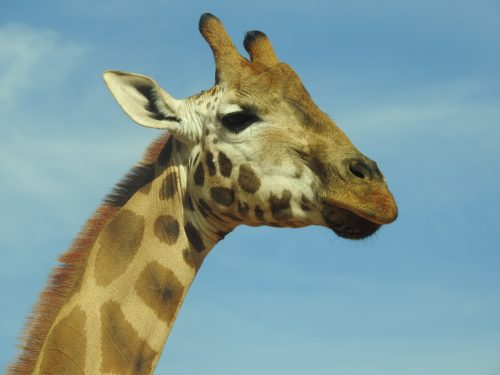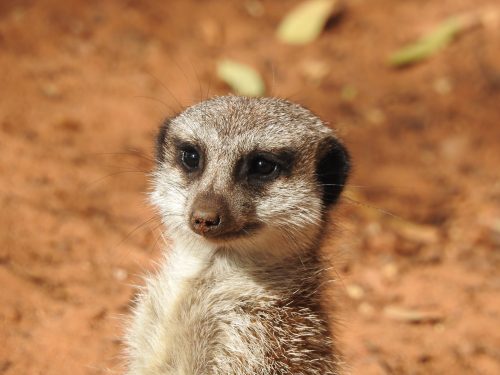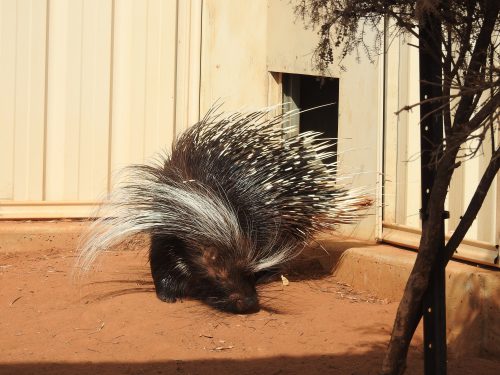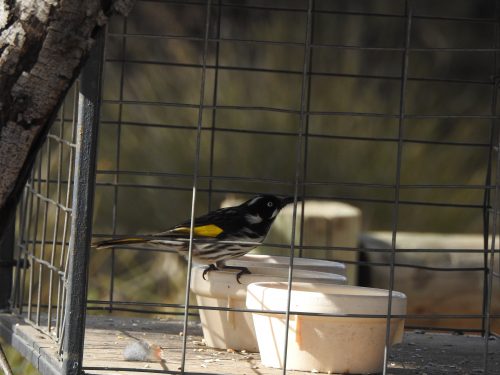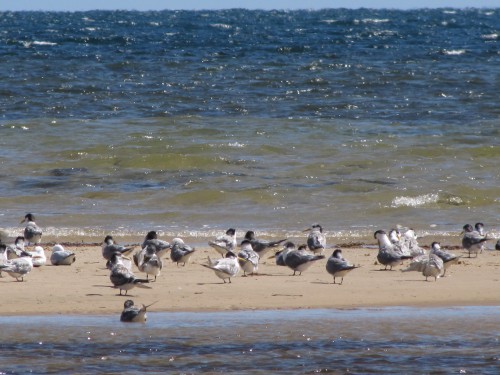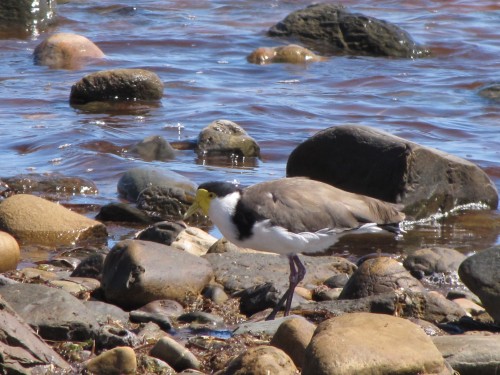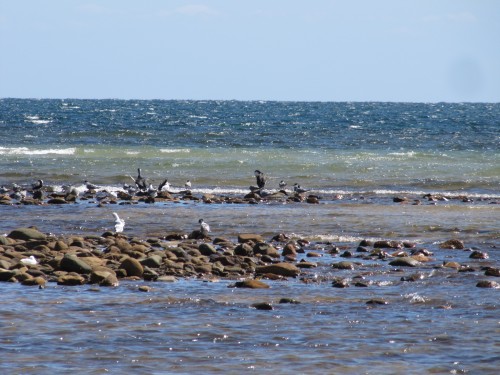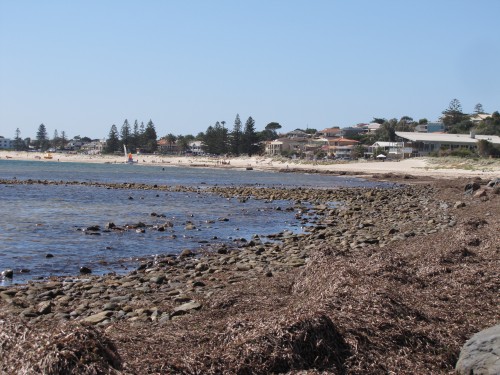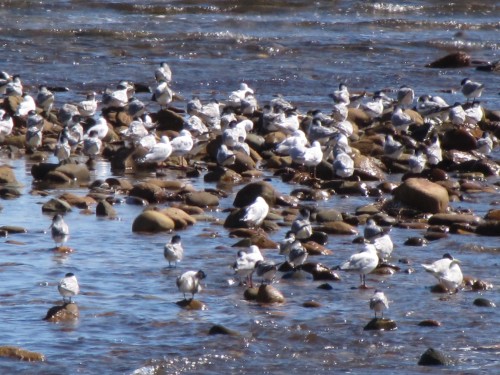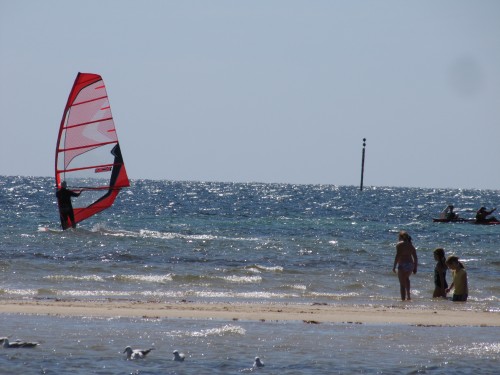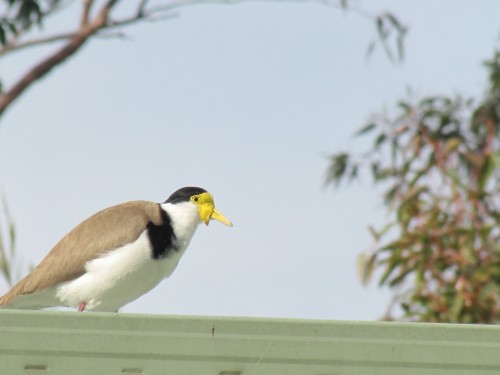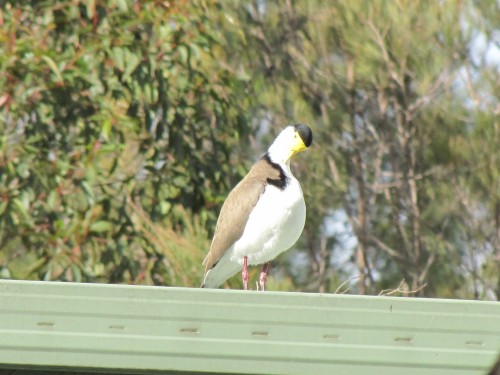Birds and animals of Monarto Zoo
Recently my friend Keith took me to Monarto Zoo. This open range zoo is about an hour’s drive south-east of Adelaide, South Australia and about ten minutes drive from my home. Over the years I have lived nearby I have been many times to this zoo which is a part of the larger Adelaide Zoo. My friend Keith is a volunteer guide at the zoo, so it was a different experience having my own personal guide for the day.
On arriving at the zoo we had a look at the Meerkats and African Crested Porcupine displays near to the visitor centre. I love the Meerkats because they frequently pose so nicely for photos. In reality, they are just acting naturally, usually one or more are sentries keeping their eyes on the lookout for any danger. Some of our larger raptors such as the various hawks and eagles found in this area would happily swoop down to catch a meal.
I was also delighted to get a good photo of the African Crested Porcupine. I hadn’t realised that the two porcupines on display were present in the zoo. They are a fairly recent addition to the collection and it has been a while since my last visit.
After a short wait, we caught the first bus tour of the zoo. There are two main ways of seeing the zoo; most people take a bus tour but quite a few alight from the bus at various points during the tour to walk to see various exhibits, or to walk the good walking trails throughout the zoo property. We chose to do part of the tour and then get off and walk one of the tracks leading back to the visitor centre where we had a delicious lunch. (I can recommend the salt and pepper squid – but there are many more items on the menu.)
Next to the Meerkat enclosure and near to the bus stop the keepers have several bird feeders. A quick snap of the New Holland Honeyeater (photo above) was all I could get before the bus arrived. It might be a good idea to spend some time here within camera range in order to get a variety of species visiting the feeders. Just as I was getting on the bus a small flock of about six or seven Weebills were busily feeding in a mallee tree; they were moving too quickly for a photo and were partly hidden by the foliage.
During the bus tour, I saw Australian Magpies feeding on the ground in the American Bison enclosure as well as a few Little Ravens. In the Giraffe enclosure, there were more magpies and several Masked Lapwings. Part of the way around the bus trip we got off the bus and then walked along the Ridge Track, one of the walking tracks through the zoo. This track took us close to the Black Rhino enclosure where I managed a few photos of a leucistic (white) Australian Magpie. I will write about that in another post.
As we approached the Chimpanzee complex I kept a good lookout for Superb Fairy-wrens which I had seen in the bushland nearby on a previous visit. Alas – no wrens today. After a lovely lunch from the zoo restaurant, we went on another walking trail. This was the Mallee Fowl Track and it takes walkers past a large aviary which has two captive Mallee Fowl in it. This part of South Australia still has a small population of this endangered bird and I have seen a few birds just south of the zoo. I also know of several nests in the region but I am not sure if they are still being used. Near the aviary, I tried to get photos of a male and female Red-capped Robin, but they were not cooperating. I guess that means a return visit soon.
Good birding,
Trevor
Further reading:
More birding at Brighton Beach
In my last post, I wrote about our weekend at Brighton Beach in the southern parts of Adelaide. During our short caravan holiday with a group of friends, we stayed in the Brighton Caravan Park – which is actually in the suburb of Kingston Park. During the weekend, most of my time was occupied chatting with my friends. We spent quite a few hours in our comfortable folding chairs, sitting at the top of the beach watching the passing parade of people walking, running, playing in the water and various water sports. Included in this constantly changing scene were various birds, mostly seabirds.
Probably the most common birds were the Silver Gulls and Crested Terns shown in the photo above. from time to time I would also see immature Pacific Gulls, as well as the occasional Little Pied Cormorant. There was an area of exposed rocky outcrops at low tide, and for much of the weekend, two Masked Lapwings spent many hours foraging for food in the seaweed and rocks. I have shown one of the birds in the photo below. I am amazed at how well camouflaged this bird is against the surrounding rocks.
On the Sunday afternoon, most of our friends went for walks along the beach. I also decided to go for a short stroll, taking photos as scenes presented themselves. The tide was slowly coming in, covering some of the rocky areas and sandbars, providing a smaller area for the roosting birds. I sat on a nearby rock for over half an hour, photographing birds, people, and boats.
A high rise bird apartment
From time to time I see some amazing, interesting or even bizarre things where birds are concerned. At first glance, today’s photos could fall into that category. Masked Lapwings (plovers) are usually found on grassy areas – lawns, ovals and roadside verges. What is this one doing on the roof of the Australian Reptile Park (near Sydney)?
Oddly enough, this is quite common behaviour with this species. In fact, they often prefer to nest up on the roof of a house, shed, office or factory in some situations. How the little hatchlings survive the drop onto the ground amazes me; they must be quite tough little balls of fluff. Perhaps all that downy fluff helps them to bounce like a tennis ball.
When you think about it, nesting on a roof is a better survival strategy than nesting on the ground like they usually do. Not only does this help minimise the threat from cats and dogs, it generally does away with interfering people and their mowers.
In this case however, it is the one safe place to nest away from the hundreds of visitors to the park every day – that’s a lot of shoes tramping around on every available bit of grass. Eggs don’t take kindly to stomping feet.
A little birding in Clare
Last December we visited our daughter who teaches in Clare in the mid-north of South Australia. One afternoon I wandered down the road to Lake Inchiquin which is next the Melrose Park on the northern edge of town. Over recent years I have often visited this top little spot to do a little birding.
Over recent years this lake has often been almost dry due to the extended drought conditions we’ve experienced over that period. This last year’s good rains has seen the lake return to capacity again. The birds have also returned, so I try to find a half hour or so to check it out every time we visit our daughter.
On this occasion I saw a few Pacific Black Ducks, Chestnut Teal, Grey Teal, plenty of Eurasian Coot, several Masked Lapwings and a solitary Darter. On the opposite shore a single Great Egret patrolled the lake edges, especially near the reeds. Another species was a Yellow-billed Spoonbill but I didn’t manage a photo of the one bird seen flying overhead.
Away from the water the birdlife was just as interesting, with Laughing Kookaburras, Little Corellas, Galahs and dozens of Rainbow Lorikeets. In nearby trees I saw Noisy Miners, Red Wattlebirds and White-plumed Honeyeaters. Standing quite still for about 5 minutes I watched a Mallee Ringneck feeding on the seeds of some weeds growing on the bank of the lake.
Kangaroos – and a few birds
Okay – so this site is supposed to be about Australian Birds. Every now and then, however, I come across something interesting to photograph which doesn’t fall into that narrow field. Here is one example.
On our recent short holiday to Yorke Peninsula we visited the lovely and secluded Pondalowie Bay. The weather was quite unpleasant with light showers and almost gale force winds. The birding was consequently very limited. I did see several Pacific Gulls along with a few Silver Gulls and a solitary Sooty Oystercatcher. Two Pelicans braved the wild conditions in the bay and a small number of Crested Terns kept watch from some rocks. A Nankeen Kestrel used the wind to its advantage, soaring on the rushing air to search out a late afternoon snack.
Leaving the shoreline and driving inland a few hundred metres the wind abated somewhat in the lee of the sand dunes and thick coastal vegetation. Here the birding was a little better and I sighted a small list of species, including
- Masked Lapwings
- Galahs
- Willie Wagtails
- Grey Currawongs
- Silvereyes
- Singing Honeyeater (also seen near the water)
- Rainbow Lorikeets
- Crested Pigeons
And just as we were leaving the camping ground area we sighted a group of five juvenile Western Grey Kangaroos grazing near the road. They are used to vehicles in this area and didn’t stop their grazing as I stopped to take some photos.
